If you’re a fan of live Christmas trees, no doubt you’ve heard many tips and tricks for keeping your Christmas tree lively and bright all season long. But there’s one super simple watering hack you might have missed. And it makes a lot of sense when you know what it is.
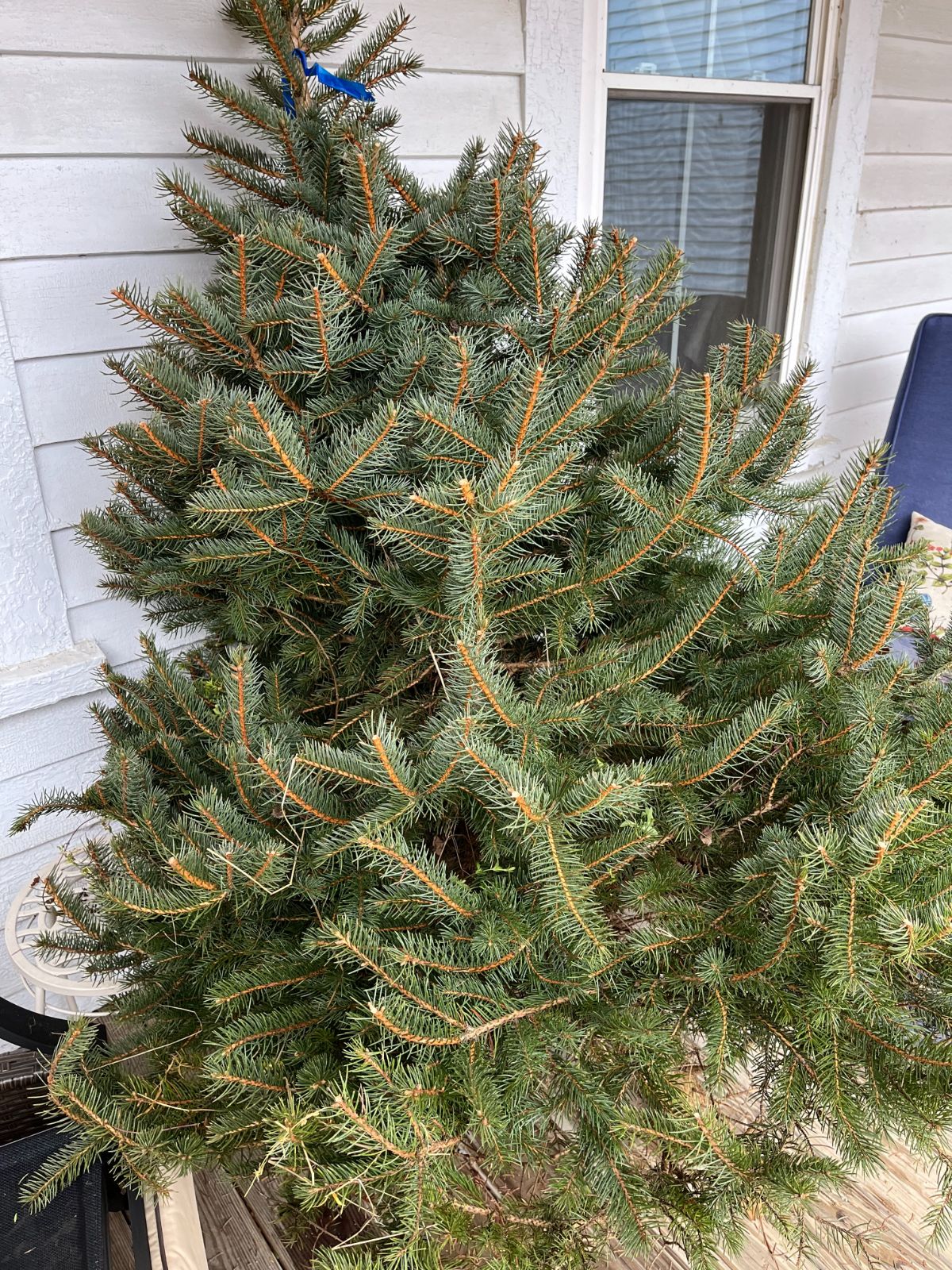
(Hint: It’s not sugar or ginger ale or lemonade or any other additive like that. Though these things may or may not work, this hack is even easier—and it’s recommended by the experts at leading tree growers and universities.)
Jump to:
IMPORTANT!! Before You Water, Read This!
We’ll get to this easy hack in a second, but before we do, there is one absolute tip that all the experts agree upon: one thing that you must do before you even set up your tree:
Give your Christmas tree a fresh cut.
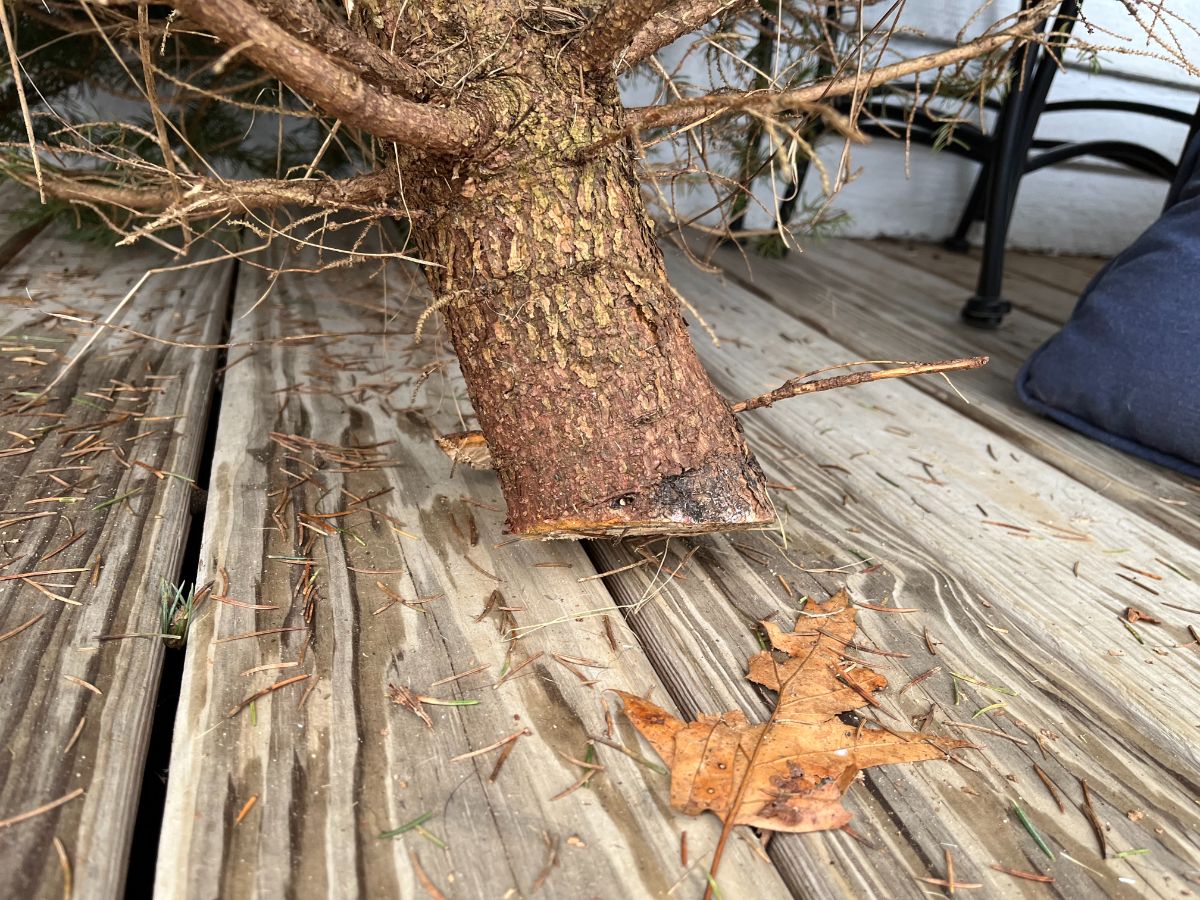
This may or may not be news to you, but this is the one thing every fresh Christmas tree keeper must know.
Before you bring your tree inside, right before you get ready to put your tree up, give it a fresh cut. This is recommended even if your tree is freshly cut from the tree farm.
- Cut one-half to one inch off the base of the tree’s trunk.
- This cuts off the “scabbed” part of the trunk and gives the tree an open, fresh surface to transport and uptake water.
What happens when a Christmas tree is cut down is that the tree sends sap to try to heal the wound that was created. That sap will start to quickly seal and harden the open trunk of the tree.
Once the sap starts to plug and harden the pores at the base of the trunk, the tree can no longer take up water. The sap hardens, similar to how a scab hardens on your skin.
This process starts almost immediately, so for the best chance of keeping your tree alive and fresh for the whole season, give it that fresh cut right before you put your tree in the base. Then water it right away.
Don’t wait until after your tree is decorated—you want to get water to the tree as soon as possible after the fresh cut is made to stop the sap from sealing it over.
But! There’s one more little trick to make sure the sap doesn’t seal the end. This is where this watering hack comes in!
The Hot Water Hack that Keeps Fresh Cut Christmas Trees Drinking
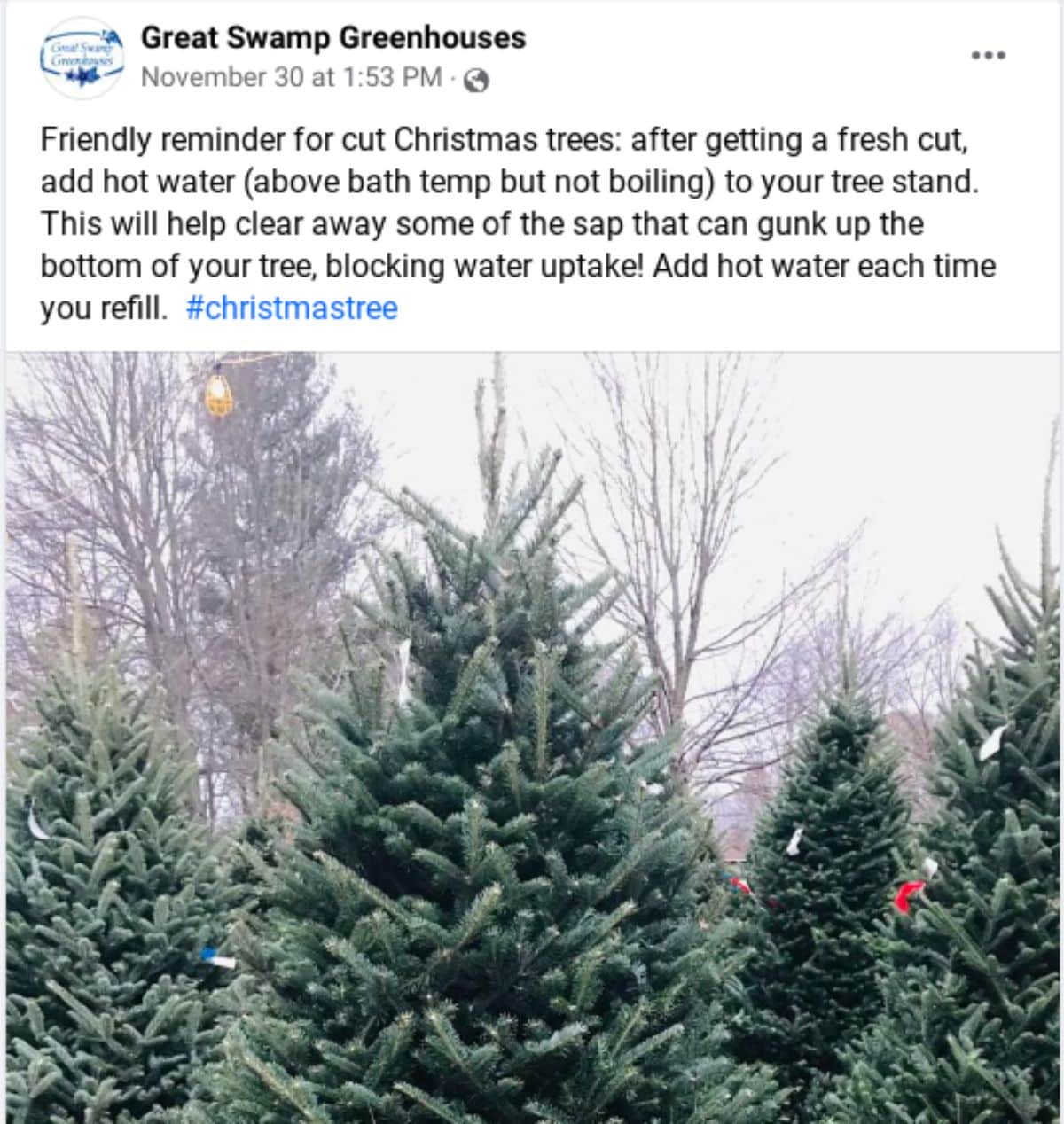
Several people have tried and reported back on this trick, and overall, it is highly recommended. At least one professional greenhouse is spreading it around social media as the one thing they recommend that people do when they get their tree home.
And a leading expert in the United States is promoting it, too – the State University of New York College of Environmental Science and Forestry (SUNY ESF) recommends this practice (along with the fresh cut right before setting up your tree).
So, what’s the big secret?
Hot water!
The First Watering

When you first water your fresh Christmas tree, use very hot water to do it. That’s it. That's the big trick (well, mostly...).
Immediately after making that fresh cut, place your fresh Christmas tree in the stand and water it with very hot water.
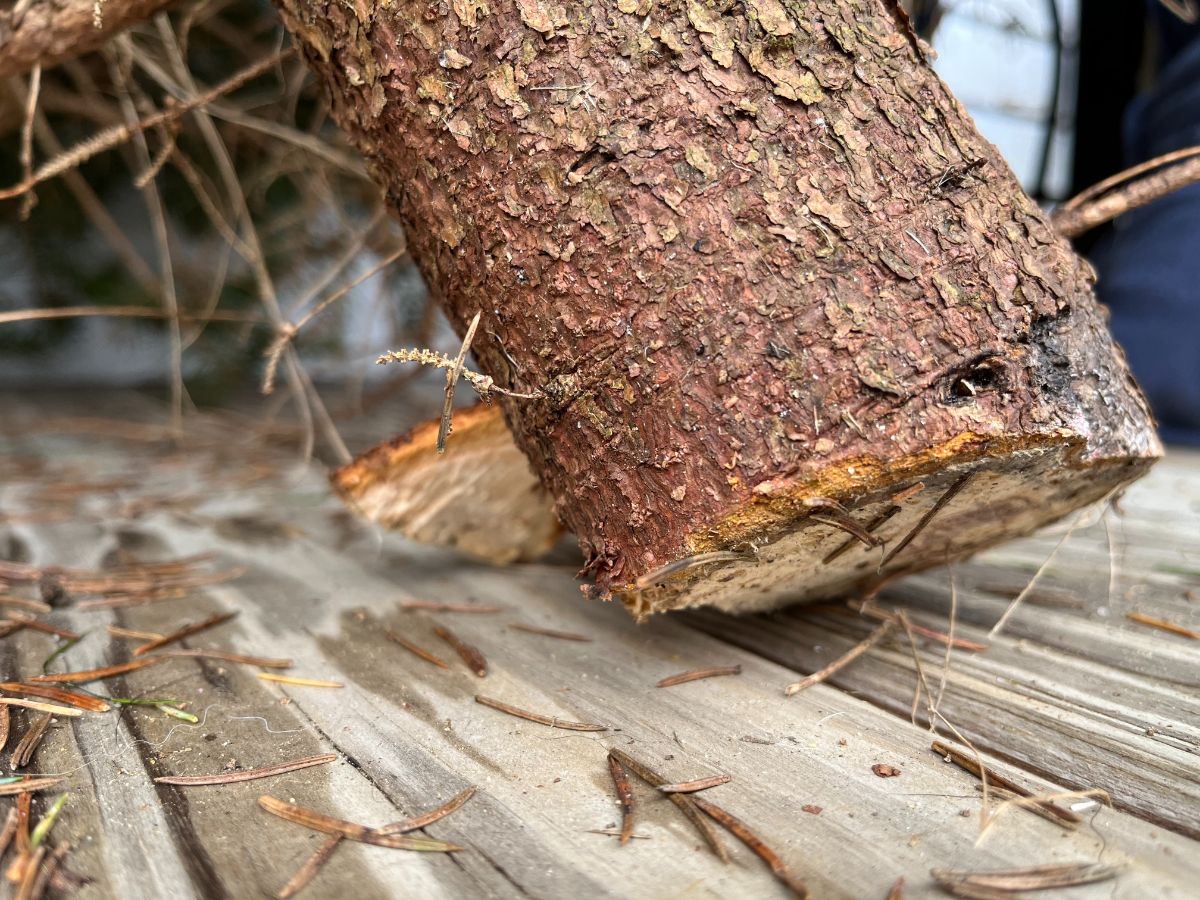
- The water should be as hot or hotter than what would be comfortable for you to bathe in
- Very hot tap water is perfectly fine (and probably the safest)
- Some sources say to use boiling water or to boil the water and then cool it for several minutes
- Boiling water can cause burns and may be too damaging for the tree
- SUNY ESF, professional growers, and several others say to use hot water (even warm should work)
- There’s little point in boiling water just to cool it down, so just use hot tap water
Bonus: This trick is said to enhance the fragrance of your Christmas tree, too!
Why it works
The reason this works is that cold water tends to harden and set the sap, while very warm or hot water will keep it softer and will loosen and melt some away from the trunk. This keeps more pores and space open for water to be taken up by the tree.
The more open the pores of the tree, the better its ability to uptake water, and the livelier and longer-lasting your fresh Christmas tree will be.
What If Your Tree Is Already Up?

Water it with hot water, anyway.
Even if you’re reading this after you put your tree up, it’s worth trying out this trick anyway. You have a better chance of softening and loosening sap with warm water than cold, and even if you only clear some of the openings, this trick should help.
As long as you have kept your Christmas tree watered, the trunk should be able to take up water. If it has dried out and scabbed over, hot water is still your best chance of reopening any of the surfaces of the trunk (which exposes the xylem, which absorbs and carries water upwards in a tree).
It’s not a guarantee for a scabbed and sealed trunk, but it’s certainly your best shot.
Watering for the Rest of the Season
After the first watering, sources vary on what temperature the water should be.
Some say it is most important to use hot water for that first watering, and some say to continue to water with warm or hot water after that. It makes sense that the water should be at least room temperature (some sources also say to leave the water to sit out to warm up to room temperature).
At any rate, there’s certainly nothing saying there is any harm in watering with warm or hot water after that initial dose, and it’s just as easy to run hot water as it is to run cold.
So, after having weeded through the sources, it seems most reasonable to say,
Continue to water your fresh Christmas tree with very warm or hot water throughout the season.
A Final Fresh Christmas Tree Tip:
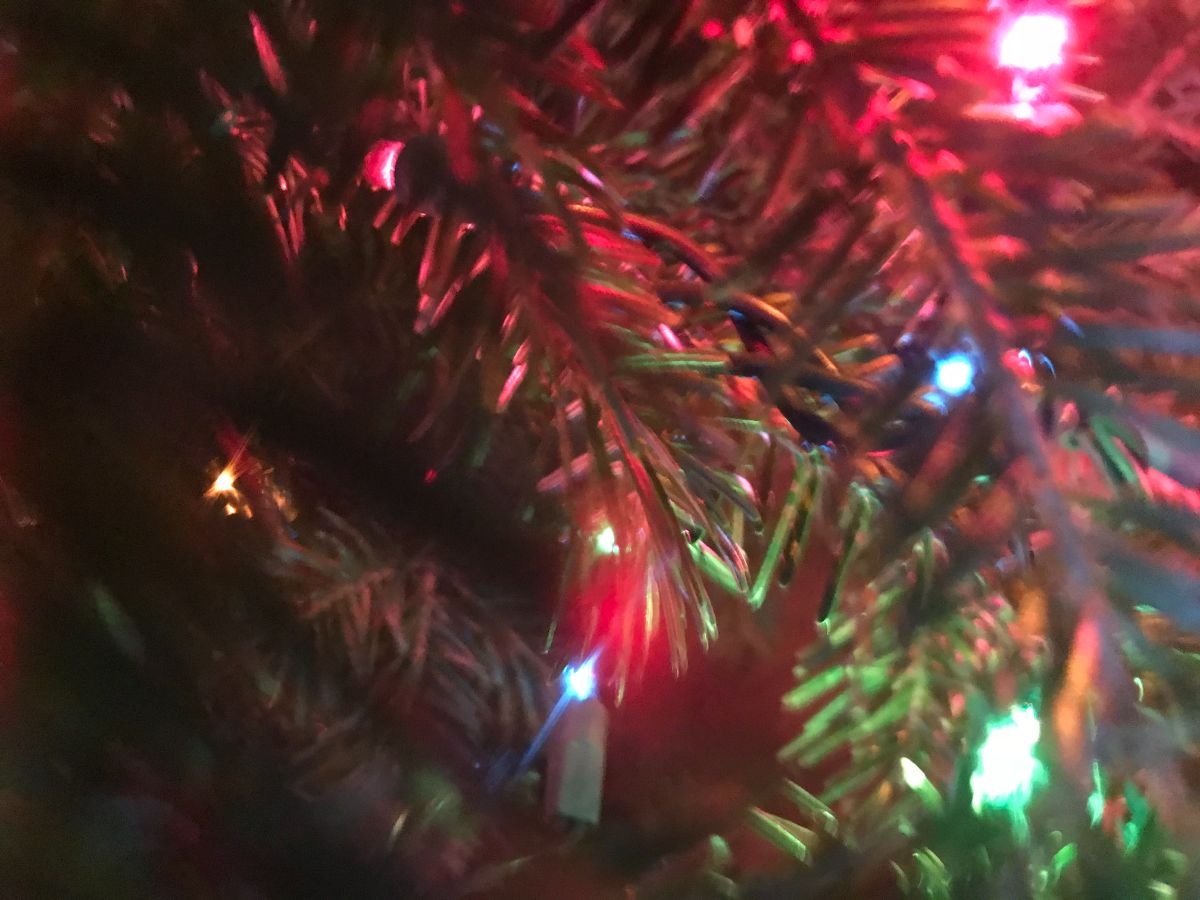
Never Let the Water Run Dry!
Here is one piece of advice that is entirely undisputed. In fact, this is critical to having your Christmas tree stay fresh for a long time—and critical to its ability to continue to drink up water:
Always keep water in your tree stand and never let it dry out below the cut surface of the trunk.
- Water your Christmas tree every day
- Top up the water to the fullest level of your stand, even if you think your tree doesn’t need water
- Christmas trees can drink a gallon of water in the first 24 hours
- After that, they usually slow down but can still drink between one and four quarts or liters of water per day
- Any time the water level falls below the cut, exposed surface, the tree will send sap to the cut surface, and the sap will start to harden
- A lack of water—water covering the open base of the tree—will immediately cause the tree to start sealing up and make it so it can’t take up water
- If you find it difficult to crawl under or bend down and water your tree, you can use a specially designed funnel with a piece of pipe attached that makes watering your Christmas tree easy
Well-Watered Christmas Trees Stay Fresher, Longer -- And They’re Safer, Too!

Watering your Christmas tree is important. Not only does it keep the tree alive and looking fresh for as long as possible, but it also makes your tree safer.
- Experts say that a dried-out tree is a much bigger fire and safety risk.
- Trees that are consistently well-watered continue to transpire.
- Transpiration means that water travels and evaporates through the trunk, tissues, and needles of the tree.
- Transpiration through the parts of the tree means that the bark, branches, and needles stay humid and moist.
- Moist, supple trees are better able to handle the warm, drying conditions of both your home and your lights and decorations.
This handy hack will keep your tree watered and able to uptake hydration, which in turn will make for a better – and safer — tree. With good care and hydration, your fresh Christmas tree should last for several weeks inside (at least three or even more).
Be an expert fresh Christmas tree caretaker. Check out these other articles to keep your Christmas tree alive and well throughout the holiday season:

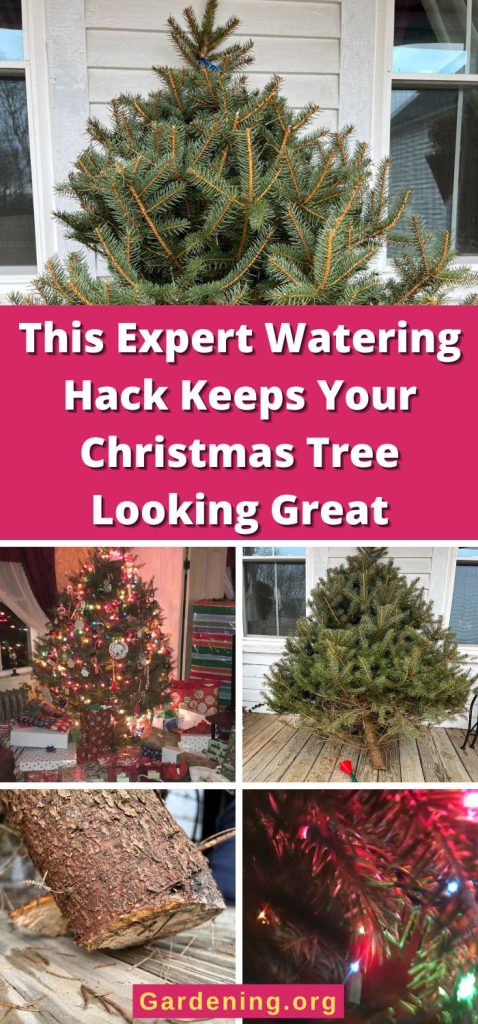
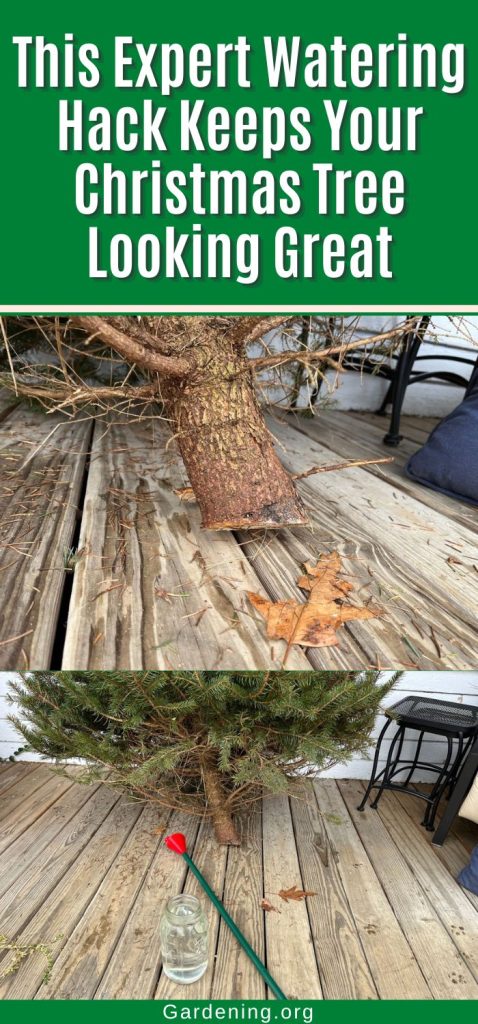
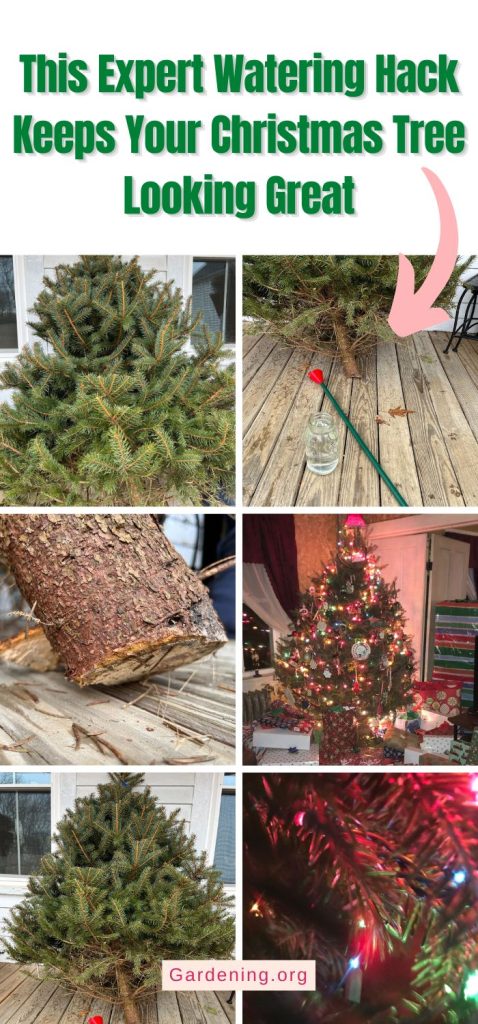
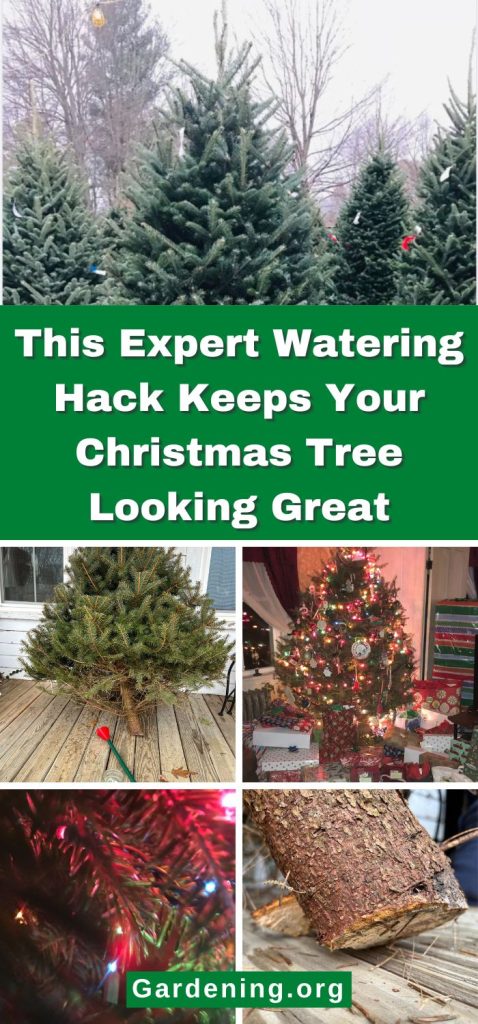




Leave a Reply